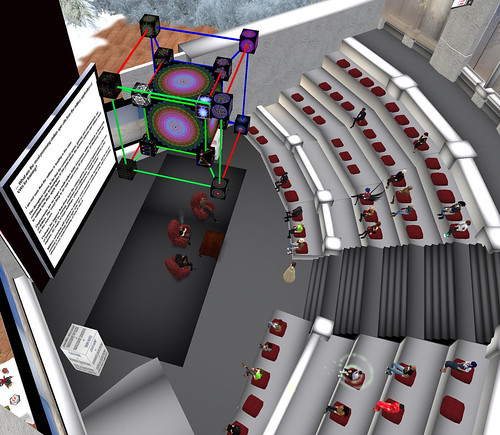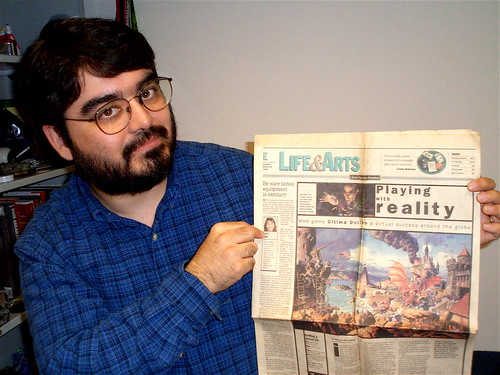Location: Virtual Worlds Roundtable
Recently I posed four questions that I will send to Rod Humble, Linden Lab's CEO. I then put the issue to members of the Virtual Worlds Education Roundtable at our weekly meeting in Second Life. Here are some of the questions, edited for parallel structure and brevity. You can read the entire transcript of our meeting, including additional questions, here.
- Is he having fun yet? (Birdie Newcomb)
- Will he be able to make it to a future meeting? (Grizzla Pixelmaid)
- What is Linden Lab doing to make support more useful and reliable? (Hour Destiny)
- Are the recent rate changes and loss of Concierge support, etc. a path/process leading LL into mobile/social networking community areas? (Gwenette Writer)
- Is it true that there is only one database for all inventory? (Hour Destiny)
- Will Linden Lab resume work on interoperability with OpenSim grids? (Gwenette Writer and Ignatius Onomatopoeia)
- How effective does he find the search in finding events? (Profdan Netizen)
- When can we expect the advertising focus and promotion to STOP being all about escaping real life and finding love and focus more attention on some of the more serious endeavors like education, research, and activism? (Olivia Hotshot)
- If 40 or 60$ a month for a full sim (= server partition) is a sustainable price on open sim grids, wouldn't there be a little room sooner or later for LL to lower theirs? (Xon Emoto)
And we want a short list! So have at it.











